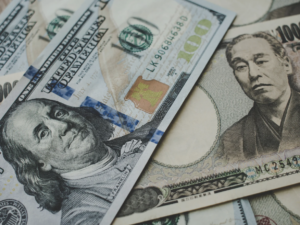Global currency markets were rattled this week after U.S. President Donald Trump proposed sweeping new tariffs targeting key trade partners, fueling concerns about a resurgence of economic nationalism. The administration’s plans include a 25% blanket tariff on imports from Japan and a 50% tariff on copper, moves that triggered immediate volatility across major currencies and commodity markets.
The Japanese yen continued to weaken sharply as traders priced in higher trade risks and potential retaliatory measures. Japan, heavily reliant on exports, is expected to feel the brunt of the policy shift, especially as it coincides with an already fragile global demand outlook. Analysts noted that the yen’s movement reflects not only currency fundamentals but also growing uncertainty over the direction of U.S. trade under Trump’s second-term leadership.
Copper markets were similarly jolted. A 50% tariff on copper imports could distort global supply chains and pricing, with ripple effects across Europe, Latin America, and Asia. Commodity-linked currencies, including the Chilean peso and the Australian dollar, experienced heightened volatility as traders responded to the prospect of disrupted copper flows and shifting U.S. demand.
Social media platforms, particularly X, were abuzz with commentary linking the tariffs to broader concerns about global economic stability. Some posts drew comparisons to the trade war of Trump’s first term, while others warned of “currency whiplash” in emerging markets dependent on U.S. trade flows.
While the Trump administration has yet to outline a detailed implementation timeline, the aggressive stance underscores a broader shift toward protectionist policy tools in the post-pandemic global economy. The return of high-impact tariffs as a political and economic instrument has rekindled market anxieties about global supply chains, inflationary pressures, and diplomatic strain with key allies.
The policy signals come as central banks in Asia and Europe remain on alert for currency destabilization and capital outflows. Market participants are closely watching how Japan, the EU, and other major economies respond—whether through policy coordination, countermeasures, or strategic currency interventions.
With the global financial landscape already navigating interest rate shifts, energy volatility, and geopolitical flashpoints, Trump’s tariff escalation adds another layer of complexity. As seen in 2018–2019, aggressive U.S. trade actions have the potential to redraw financial flows, and in 2025, those tremors are once again being felt on trading desks from Tokyo to Frankfurt.






